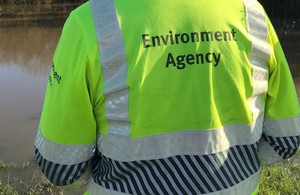The overstretched Environment Agency has instructed staff to ignore ‘low-impact’ pollution incidents. Here’s what that could mean for the natural world.
In a move that has angered clean river campaigners and environmentalists, the Environment Agency (EA) has instructed its staff to ignore “low-impact” pollution incidents reported to the body.
A leaked memo seen by The Guardian and ENDS Report cites a lack of funding and resources for investigating such “low-impact” events, known as category 3 and 4 incidents.
The memo suggests the decision will have “benefits” including allowing the agency to dedicate more resources to high-impact pollution incidents as well as “increased consistency of response and service for customers”.
NGOs and environmental campaigners, however, say the move could be disastrous for the natural world, especially when it comes to England’s already-polluted waterways. So just how bad could the damage be?
What is a “low-impact” pollution event?
The EA categorises pollution incidents on a sliding, numbered scale, with category 1 referring to the most serious, and category 4 referring to the least severe events.
The categories are defined as follows:
- Category 1 – major, serious, persistent and/or extensive impact or effect on the environment, people and/or property
- Category 2 – significant impact or effect on the environment, people and/or property
- Category 3 – minor or minimal impact or effect on the environment, people and/or property
- Category 4 – substantiated incident with no impact.
The EA determines the impact of a pollution incident on air, water and land, and different categories can be given for each.
While category 1 and 2 incidents are those with the most serious, sometimes irreversible damage to the environment, category 3 and 4 incidents are not without damage to the environment.
A category 3 incident, for instance, might include farm pollution, sewage pollution or hazardous dumps of waste by businesses, where damage is considered “minimal”.
In waterways, a category 3 incident allows for “minor loss” of fish habitat as well as “minor mortality” of fish.
The leaked memo from the EA tells staff that if a category 3 or 4 incident doesn’t relate to a water company or regulated site, they should “not substantiate report, call site or add any details. Shut down report”.
How many low-impact pollution incidents are there?
The EA’s National Incident Recording System shows that 116,000 potential pollution incidents were reported to the body in 2021, though the data does not show how many of these were category 3 and 4 incidents.
However, its environmental performance report looking at water companies’ performance in 2019 reveals a concern over not just category 1 and 2 incidents, but category 3 incidents as well.
“The 2019 performance data shows that the [water] sector needs to make substantial improvements to meet our expectations for both serious (category 1 and 2) and total (category 1 to 3) pollution incidents,” the report reads.
How good is the Environment Agency at responding to pollution?
The EA has admitted that, thanks to under-funding, its capacity for investigating pollution incidents is limited.
Of the 116,000 potential pollution incidents reported to the agency in 2021, only 8,000 were actually attended.
The body’s 2020 report on its own activities warned that “our attendance at incidents is reducing as our funding to deal with them has been reduced. Resources are needed to fund this work because one day one could be catastrophic”.
What could the environmental damage be?
NGOs and clean river campaigners have suggested the decision by the EA is particularly dangerous because it is often not possible to categorise a pollution incident, or know its source, without attending the site in person.
An EA officertold The Guardian it would be “impossible” to ascertain what level of incident had taken place without visiting it.
This creates the possibility of higher-impact pollution incidents going ignored due to being categorised as category 3 or 4 incidents.
Campaigners have also pointed out that the UK’s natural environment is already seriously depleted, with only 14 per cent of English rivers in “good” ecological condition.
Ignoring “lower-impact” pollution events, they fear, could lead to even further decline of such vital natural assets.
Chief executive of the Rivers Trust, Mark Lloyd, called the decision an “appalling scandal”.
“The fact that the agency does not have the resources even to investigate these pollution incidents is an appalling scandal. They need the resources and political backing to take robust action in all cases of pollution if our rivers are not to continue suffering endemic pollution and an ongoing decline in quality.
“You can imagine the rightful public outcry if the police said they would no longer investigate burglaries and criminal damage because they only had the resources to focus on more serious crimes like murder – environmental incidents should not be treated lightly,” he said.
The Environment Agency has been contacted for comment.
Source: The Big Issue 11th January 2022











